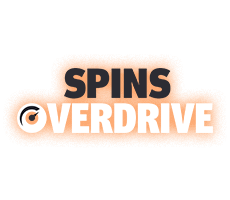How to play
Fold equity & how it affects your decisions
You may have heard the term "fold equity" when discussing or reading about poker and are wondering what it is and how it affects your decisions at the poker tables. It is an important concept many players neglect to consider because they wrongly believe it is overly complicated and requires incredible mathematic skills. Sure, fold equity is a little complex, but PartyPoker is here with an easy-to-digest guide.
Strip everything away and fold equity is the probability a player will fold to a bet or raise. Fold equity is displayed as a percentage, although it also has a monetary value attached to it. For example, if the pot is $100 and you think there is a 35% chance your opponent folds to a bet, you have 35% fold equity worth $35.
You have equity in each poker hand that you play. If two players are all in, both players realize their total equity. An example of this would be moving all-in preflop with 9s-8s and an opponent calling with Ah-Kh. In this scenario, your 9s-8s has a shade over 37.5% equity, meaning your hand will win 37.5% of the time. If the pot is $100, your equity in the hand is $37.50.
However, not every hand seems the active players all-in, and there is a chance our opponent will fold to any bet we make, and the possibility of that happening adds some equity to our hand.
An example of fold equity in action
Keeping with the same cards as above, let's pretend an opponent raises to $20 from the button with Ah-Kh, and we call in the big blind with 9s-8s. The flop falls 7s-6s-3h, giving us an open-ended straight flush draw, which is almost as good as it gets in terms of drawing to some outs. We check, and our opponent makes a continuation bet of $30 into the pot of $42. What is our play?
With so many outs, we have plenty of equity in this hand, mainly because the button could and should be opening for a raise with a wide range of hands. Against a hand as strong as Ah-Ad, we have more than 56% equity. Against specifically Ah-Kh, we have 66.67% equity, so we are in a good spot yet far from a lock to win.
Of course, the button has many more hands in his opening range than only Ah-Ad and Ah-Kh. Let's say we estimate that we have 55% equity against all of the button's range, which is a fair assumption. If we call the $30 continuation bet, our equity remains at 55%. However, if we raise and our opponent folds, our equity soars.
The tricky part is figuring out how often you think your opponent folds to a bet or raise. In our example hand, a large percentage of the button's range will not be strong enough to warrant continuing in the face of aggression. We believe the button folds 60% of his range when we check-raise in this spot.
Now is the time to calculate our fold equity using the following formula:
Fold Equity = Chance of your opponent folding x your hand equity.
Punch the numbers we know into this formula, and our fold equity is 33% (60% chance of a fold x out hand equity 55%). Now that we know our fold equity, we can add that to our hand's equity and arrive at our total equity. 55% plus 33% is 88% equity, which gives us a far betting chance of winning than simply calling, which means we should raise here.
In reality, your opponent may fold far more often than 60% of the time, increasing your total equity.
What factors influence fold equity?
Your playing style and that of your opponents is the number one most significant factor influencing fold equity. You will have less fold equity if you play a loose-aggressive style because you will naturally splash around in more pots, and your opponents will give you less credit for having the goods.
Conversely, a tighter player gains fold equity because they play a narrower range of hands, usually at the stronger end of the scale, so opponents give them more credit when they bet and raise.
Furthermore, your fold equity reduces against short-stacked players because they are desperate to double their stack, but fold equity increases against players with stacks similar to yours because they have more to lose by calling your bets and raises incorrectly.
You may find your fold equity is non-existent against some opponents because they never fold. These so-called calling stations can be frustrating to play against but also profitable. Don't bluff them whatever you do because you have zero fold equity; instead, value bet them to death!

